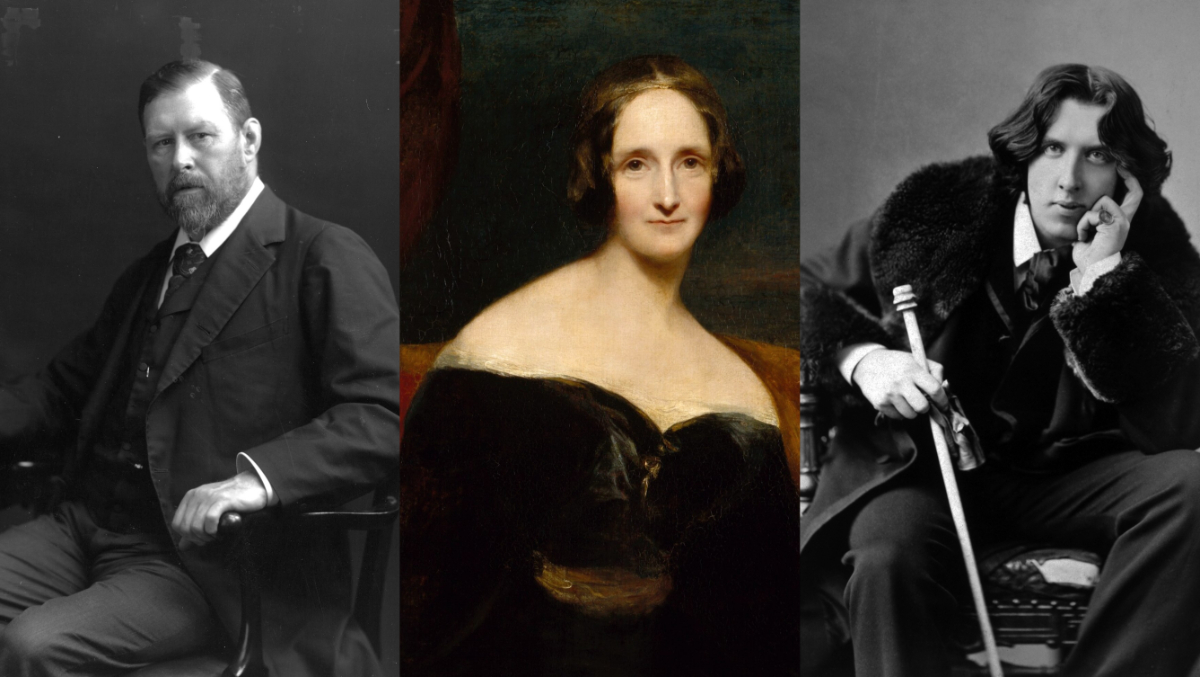“You’re reading too much into it.” That’s a familiar refrain that queer fans will recognize. Too often, queer audiences are told that they are imagining queerness where none exists. That unless a character, relationship, or scenario is overwhelmingly confirmed as queer (and sometimes even then), it must not be so. But, of course, given the norms of our society throughout history and into modernity, it’s absurd to expect queerness to exist (and to have always existed) in complete overtness. But it does exist. And queer fans can spot it from a mile away. As Shudder’s incredible documentary Queer for Fear: A History of Queer Horror leads us magnificently through the many facets of queerness and its place in horror’s history, it also underscores this crucial point. The documentary unapologetically says, “If you know, you know.” And if you don’t know, you’d better get with the program.

This review covers the first two episodes of Queer for Fear from executive producers Bryan Fuller and Steak House. But if the first half of the documentary is any indication of what’s to come, queer media and horror fans alike are in for an incredible time when the documentary fully releases. Queer for Fear‘s first outing centers on the immense queerness of horror’s literal creators. At center here are the gothic and romantic writers Mary Shelley, Oscar Wilde, and Bram Stoker. This trio, of course, wrote Frankenstein, The Picture of Dorian Gray, and Dracula, respectively. And they were all queer, despite, as the documentary notes, what historians might like for you to believe. Queer for Fear‘s first episode also examines the work of queer director F.W. Murnau and his queer-coded Nosferatu.
Right off the bat, Queer for Fear finds its footing, digging into the queerness of horror from every possible angle. In essence, the documentary has queer horror critics analyzing queer horror content created by queer horror creators (in many cases). And thus, it leaves no stone unturned. The first episode of Queer for Fear includes such gems as a breakdown of every reason why Dracula reads as queer, a heartbreaking dive into Oscar Wilde’s fate, and a hilarious dramatic reading from a letter Mary Shelley once wrote. Shelley notes, “Had I been a man, I should certainly have fallen in love with her, and had she taken the trouble, she might have wound me ’round her finger. And being afraid of men, I was apt to get tousey mousey for women.” We’ll let you fill in for yourself what exactly “tousey mousey” means in this context.
And yes, historians would like you to believe this woman is straight as an arrow.

Up next, episode two of the documentary centers on gay director James Whale and his four classic movies, Frankenstein, The Old Dark House, The Invisible Man, and The Bride of Frankenstein. Naturally, all of these are filled to the brim with queer characters and symbolism. (Three cheers for a true lesbian hero, Rebecca Femm. And, of course, for the Bride of Frankenstein, who does not need a man in her life.)
This episode additionally delivers the story of Anthony Perkins in Alfred Hitchcock’s Psycho. It features Perkins’ son telling the achingly sad tale of his closeted father and highlights what playing a queer-coded role offered and stole from a queer man. This second section also meditates deeply on the connection between “the monster” character and the queer person in the eyes of society. It reminds us that although “the monster” can be innocent in the face of malice, almost always, its fate must be death for its difference. A thematic thread that unfortunately continues into today’s world. But, of course, Queer for Fear always has time for a good top/bottom debate centering on Rebecca‘s Mrs. Danvers and a reminder that many monsters in horror can, in fact, get it.
But can so many facets of horror really be so queer? One might ask. And ultimately, Queer for Fear is here to answer, yes, always. And that’s the true power and strength of the documentary. Because Queer for Fear is not afraid to claim queerness where it sees it. Through the work of many queer contributors, it brings to life queerness which up until now has remained largely hidden. Queer for Fear honors what others might derisively refer to as “subtext.” It puts together the context clues that history might try to erase. And it links together the queer connections that have always been painfully obvious to queer people watching. The queer narrative of monstrosity, otherness, and an inability to simply conform will always be inextricably linked to horror.
The documentary works to embrace this generational legacy of knowledge. And it takes this knowledge and delivers it plainly. It says, yes, coding can be implicit and it can be purposeful. It says, yes, this horror creator may have gotten married, but in their own words, they have spoken of their queerness. Queer for Fear says it is enough for a queer person to know there is queerness happening in horror. Nothing more required. And that is the kind of validation queer communities desperately seek yet so rarely receive.

Shudder’s Queer for Fear is quite possibly the queerest thing I have ever seen. It doesn’t gloss over a legacy of collectively experienced queer pain, but it always remembers to bring a balm of queer joy. It brings many diverse queer voices to the table and cheers them on. Queer for Fear gives queerness a chance to shine, unencumbered. And in the words of a famous horror writer, “This is all I ever wanted for us…”
“It’s beautiful.”
The post QUEER FOR FEAR Delivers Deliciously Unapologetic Dive Into Horror’s Queerness appeared first on Nerdist.
Source: Keulisyuna
0 Comments